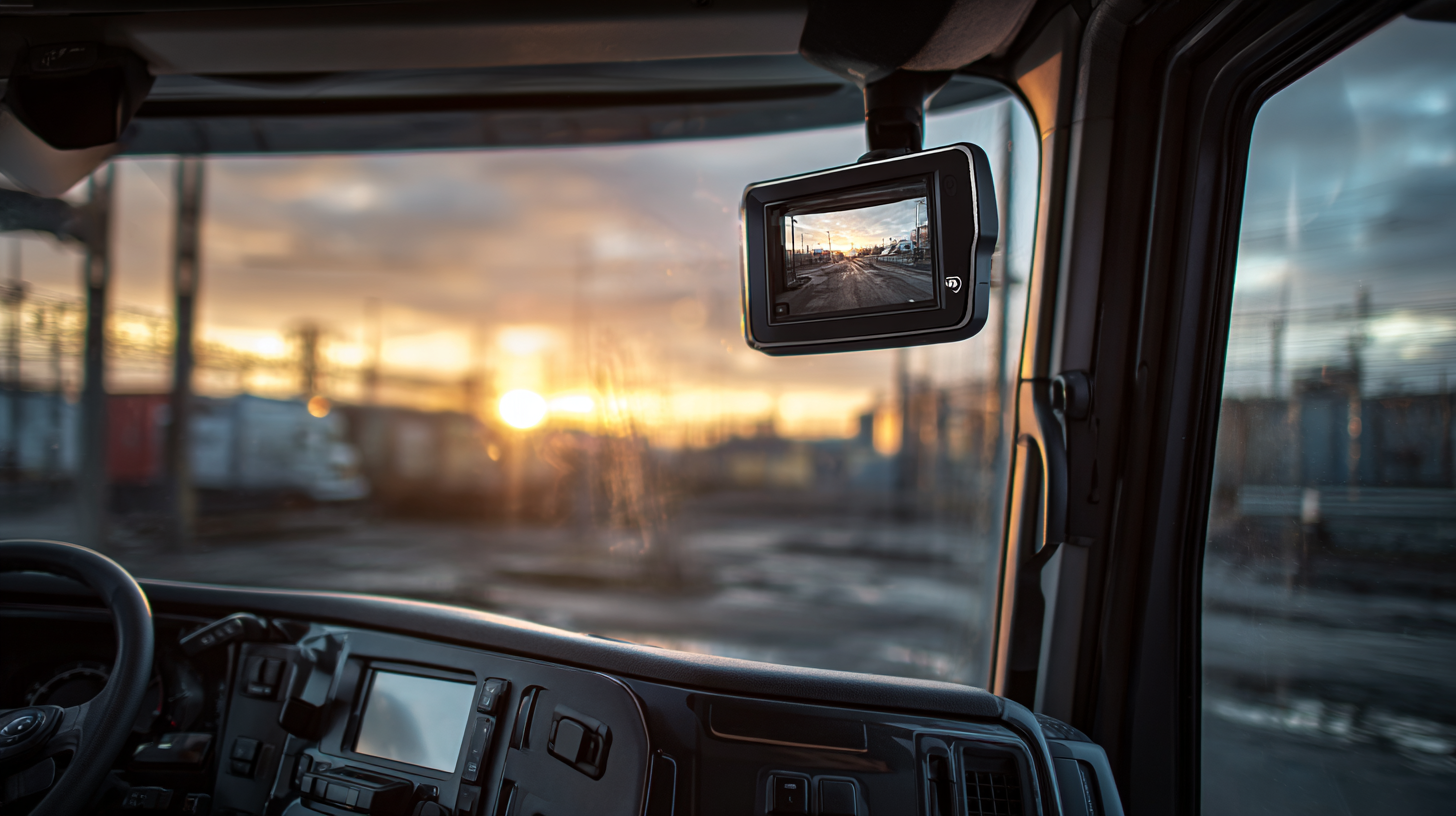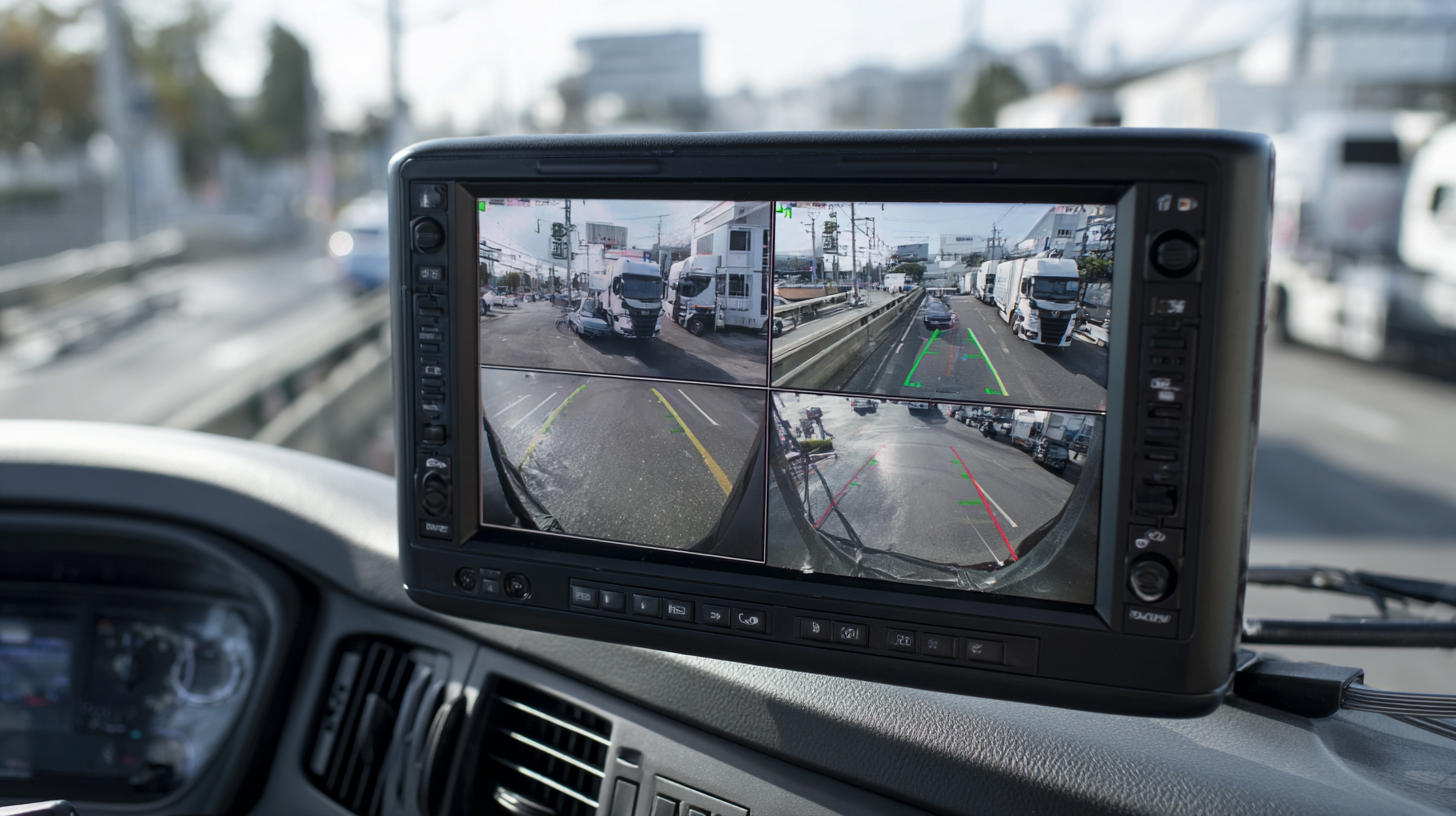As the landscape of vehicle safety evolves, ensuring the well-being of both drivers and pedestrians is paramount, especially in fleet operations. One of the critical advancements in this area is the implementation of high-quality Truck Reverse Camera systems. By 2025, trends indicate a significant shift towards enhanced safety features in commercial vehicles, and choosing the right reverse camera can be a game-changer for fleet management. With numerous options available, it can be a daunting task to identify the best fit for your trucks. This tutorial will guide you through the essential factors to consider when selecting a Truck Reverse Camera, helping you to enhance safety, reduce blind spots, and ultimately improve operational efficiency in your fleet. Join us as we explore the latest innovations and practical tips that will ensure your trucks are equipped with the best safety technology available.

In 2025, the importance of truck reverse cameras for fleet safety cannot be overstated. As road safety continues to evolve, advanced technologies such as backup cameras become essential in preventing accidents and enhancing visibility. Fleet operators must prioritize these systems, especially considering the growing number of recalls due to backup camera malfunctions. Recent incidents have highlighted how even major manufacturers face challenges in ensuring software reliability, which makes selecting a dependable reverse camera a priority for those managing a fleet.
When choosing a truck reverse camera, it’s crucial to look for cameras equipped with advanced features such as night vision, wide-angle views, and real-time monitoring capabilities. These attributes significantly reduce blind spots, allowing drivers to maneuver safely in tight spaces or crowded environments. With the increasing frequency of vehicle recalls linked to safety features, integrating high-quality cameras into your fleet can reinforce safety protocols and mitigate risks associated with driving large vehicles. Investing thoughtfully in technology that enhances visibility can ultimately lead to safer fleets and a more secure driving environment.
| Camera Feature | Description | Importance for Fleet Safety | Estimated Cost ($) |
|---|---|---|---|
| HD Resolution | High-definition cameras provide clearer images. | Enhances visibility and detection of obstacles. | 150 |
| Wide-Angle View | Offers a broader field of vision. | Reduces blind spots and collision risks. | 200 |
| Night Vision | Captures images in low-light conditions. | Improves safety during night operations. | 250 |
| Obstacle Detection Alerts | Alerts for nearby potential hazards. | Enhances driver awareness and reduces accidents. | 300 |
| Wireless Connectivity | Allows for real-time viewing and recording. | Facilitates monitoring and data collection. | 180 |
 When selecting a high-quality truck reverse camera for your fleet in 2025, there are several key features to consider to ensure optimal performance. First and foremost, look for cameras that offer high-definition video quality, which is crucial for capturing clear images and details, especially in low-light conditions. The ability to see obstacles and surroundings clearly can prevent accidents and enhance safety during reversing maneuvers.
When selecting a high-quality truck reverse camera for your fleet in 2025, there are several key features to consider to ensure optimal performance. First and foremost, look for cameras that offer high-definition video quality, which is crucial for capturing clear images and details, especially in low-light conditions. The ability to see obstacles and surroundings clearly can prevent accidents and enhance safety during reversing maneuvers.
Another important feature is the camera's field of view. A wider angle allows drivers to see more of the area behind the truck, minimizing blind spots. Additionally, choose a model with night vision capabilities. This is essential for safe operation during nighttime hours or in poorly lit environments.
Tips: When installing the camera, ensure it is mounted at the correct height for an unobstructed view. Regularly clean the camera lens to avoid dirt and debris affecting visibility. Lastly, consider a system that integrates with your existing fleet management software for real-time monitoring and easier access to recorded footage. This can facilitate better decision-making and enhance the overall safety of your fleet.
As the truck industry continues to evolve, safety compliance remains a critical focus for fleet managers. With the enforcement of standard GB-15084 in China effective July 1, 2023, companies are increasingly integrating advanced Camera Monitor Systems (CMS) into their fleets to enhance safety measures. This move aligns with international trends, as seen in 2016 when Europe implemented ECE R46, which paved the way for CMS adoption by 2018.
Industry research highlights that vehicles equipped with CMS can significantly reduce blind spots, which are a main contributor to accidents during reversing maneuvers. Reports suggest that integrating a quality truck reverse camera can lead to an estimated 30% decrease in collision incidents in commercial fleets. This statistic underscores the importance of choosing the right equipment that adheres to the latest safety standards while meeting the specific operational demands of a fleet.
Furthermore, the implementation of truck reverse cameras not only enhances safety compliance but also promotes a culture of accountability and risk management within the organization. With data from various industry sources indicating that nearly 80% of all fleet-related accidents occur during reversing, the need for effective visibility solutions is clear. By investing in the best truck reverse cameras, fleet operators can not only comply with new regulations but also significantly improve overall safety for drivers and pedestrians alike.
In the evolving landscape of vehicle safety, selecting the right reverse camera for your fleet can significantly impact accident prevention and operational efficiency. According to the National Highway Traffic Safety Administration (NHTSA), 1 in 5 crashes involving a large truck occurs while backing up, underscoring the necessity for reliable camera technology. When comparing digital versus analog reverse cameras, it's crucial to consider resolution and image clarity; digital cameras generally provide superior quality, offering 720p to 1080p resolutions that enhance visibility in low-light conditions. In contrast, analog cameras typically offer lower resolutions, which may lead to blind spots that jeopardize safety.
Additionally, the integration of advanced features such as real-time video feeds and connectivity options plays a pivotal role in fleet management. A report from MarketsandMarkets indicates that the smart fleet management market is expected to grow from $8.3 billion in 2020 to $18.0 billion by 2025, highlighting the growing emphasis on technology-driven solutions for improved safety. Digital reverse cameras often include functionalities like object detection and alerts, which not only assist drivers but also reinforce accountability and professionalism in fleet operations. Hence, choosing a high-quality digital reverse camera is an invaluable investment that aligns with industry trends and enhances overall vehicle safety.
As fleets increasingly embrace new technologies to enhance safety, investing in advanced truck reverse cameras has become a crucial consideration. The cost-benefit analysis of these systems reveals that while initial investments may seem significant, the long-term benefits far outweigh the expenses. Enhanced safety features help prevent accidents, reduce liability costs, and cut insurance premiums, all contributing to a healthier bottom line for fleet operators. With the rise of autonomous trucking technology, the integration of advanced camera systems is also becoming essential to ensure seamless interactions between human drivers and driverless vehicles.

Moreover, the transition towards electric vehicles (EVs) is further driving the need for sophisticated safety solutions. As fleets move to adopt electric trucks, advancements in battery technology and overall vehicle design necessitate the installation of high-quality reverse cameras to mitigate the unique challenges posed by these innovations. This investment will not only enhance fleet safety but also position companies to benefit from future trends in transportation, including the expected growth of the autonomous truck market, projected to reach a staggering $405 billion by 2035. In this rapidly evolving landscape, outfitting trucks with advanced reverse cameras is a forward-thinking strategy for any fleet aiming to prioritize safety and adapt to upcoming changes in technology.
